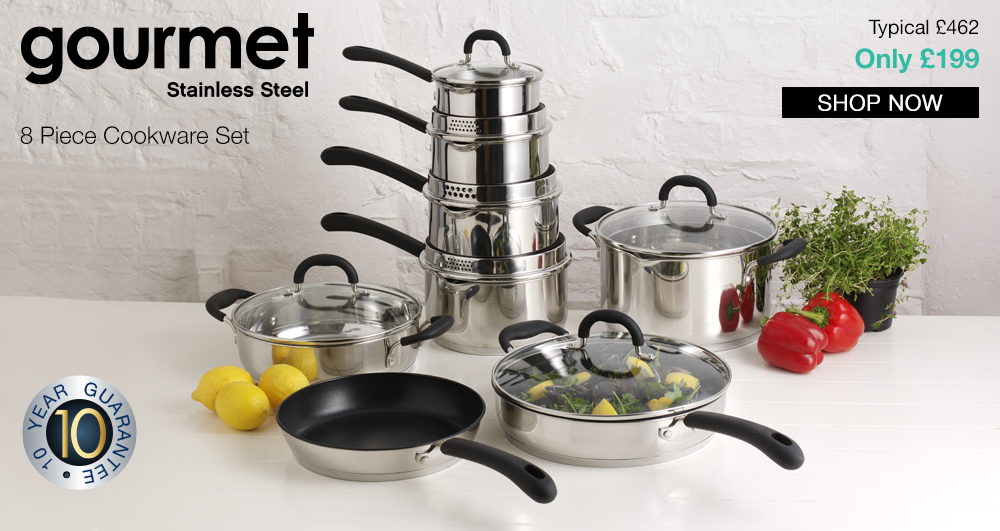As you might expect, the traditional
casserole dish has a long and rich history. Since the Stone Age it has
been known that slowly cooking food brings out extra flavor and earthenware
pots count among some of the earliest cooking implements to have been used by
humans. But what about the specific notion of an oven casserole? Here's a brief
history of the popular dish, along with a recipe that will help you make use of
any leftovers.
The first modern cooking ranges began to appear in England the late 1700s. These were essentially a case of mortar or cast iron that enclosed a fireplace with a restricted chimney. These made it possible to cook on either the stove top or in oven compartments. However, the heat wasn't really adjustable, and the whole appliance had to be heated in order for it to work, so the idea of putting a pot in the oven would have seemed a little odd - the stove would have been hot anyway. However, poorer families were making use of a kind of oven casserole at this time. It was known as a box oven stew, and involved heating a pot over a fire to start the cooking process, then quickly moving it to a box and covering it with lots of straw. This kept the pot hot for hours, and created a slow cook without requiring any extra fuel.
The name casserole appeared as a term for a French dish that involved mashed rice and bits of meat in the 1800s, but in the later part of that century it began to apply to oven casseroles in America. These grew in popularity during the depression, when Campbell’s released special condensed soups marketed for the purpose of casserole cooking. As with most American classics, putting a new name on an old idea was enough to cement it as part of the national culinary identity.
Leftover turkey casserole recipe:
500g turkey, shredded
300g vegetables
1 onion, diced
1 eating apple, cored and chopped
2 tbsp plain flour
300ml vegetable or chicken stock
A dash of vinegar
A sprig of thyme
1 tbsp wholegrain mustard
2 tbsp runny honey
1. Fry the onions and apple in a casserole pot with a dash of vinegar until softened. Stir in the flour.
2. Add the stock gradually and stir, followed by the rest of the ingredients.
3. Move the casserole to the oven, heated to 190°C / gas mark 5.
4. Remove after 30 - 45 minutes, remove sprig of thyme, and serve with crusty bread.
The first modern cooking ranges began to appear in England the late 1700s. These were essentially a case of mortar or cast iron that enclosed a fireplace with a restricted chimney. These made it possible to cook on either the stove top or in oven compartments. However, the heat wasn't really adjustable, and the whole appliance had to be heated in order for it to work, so the idea of putting a pot in the oven would have seemed a little odd - the stove would have been hot anyway. However, poorer families were making use of a kind of oven casserole at this time. It was known as a box oven stew, and involved heating a pot over a fire to start the cooking process, then quickly moving it to a box and covering it with lots of straw. This kept the pot hot for hours, and created a slow cook without requiring any extra fuel.
The name casserole appeared as a term for a French dish that involved mashed rice and bits of meat in the 1800s, but in the later part of that century it began to apply to oven casseroles in America. These grew in popularity during the depression, when Campbell’s released special condensed soups marketed for the purpose of casserole cooking. As with most American classics, putting a new name on an old idea was enough to cement it as part of the national culinary identity.
Leftover turkey casserole recipe:
500g turkey, shredded
300g vegetables
1 onion, diced
1 eating apple, cored and chopped
2 tbsp plain flour
300ml vegetable or chicken stock
A dash of vinegar
A sprig of thyme
1 tbsp wholegrain mustard
2 tbsp runny honey
1. Fry the onions and apple in a casserole pot with a dash of vinegar until softened. Stir in the flour.
2. Add the stock gradually and stir, followed by the rest of the ingredients.
3. Move the casserole to the oven, heated to 190°C / gas mark 5.
4. Remove after 30 - 45 minutes, remove sprig of thyme, and serve with crusty bread.







